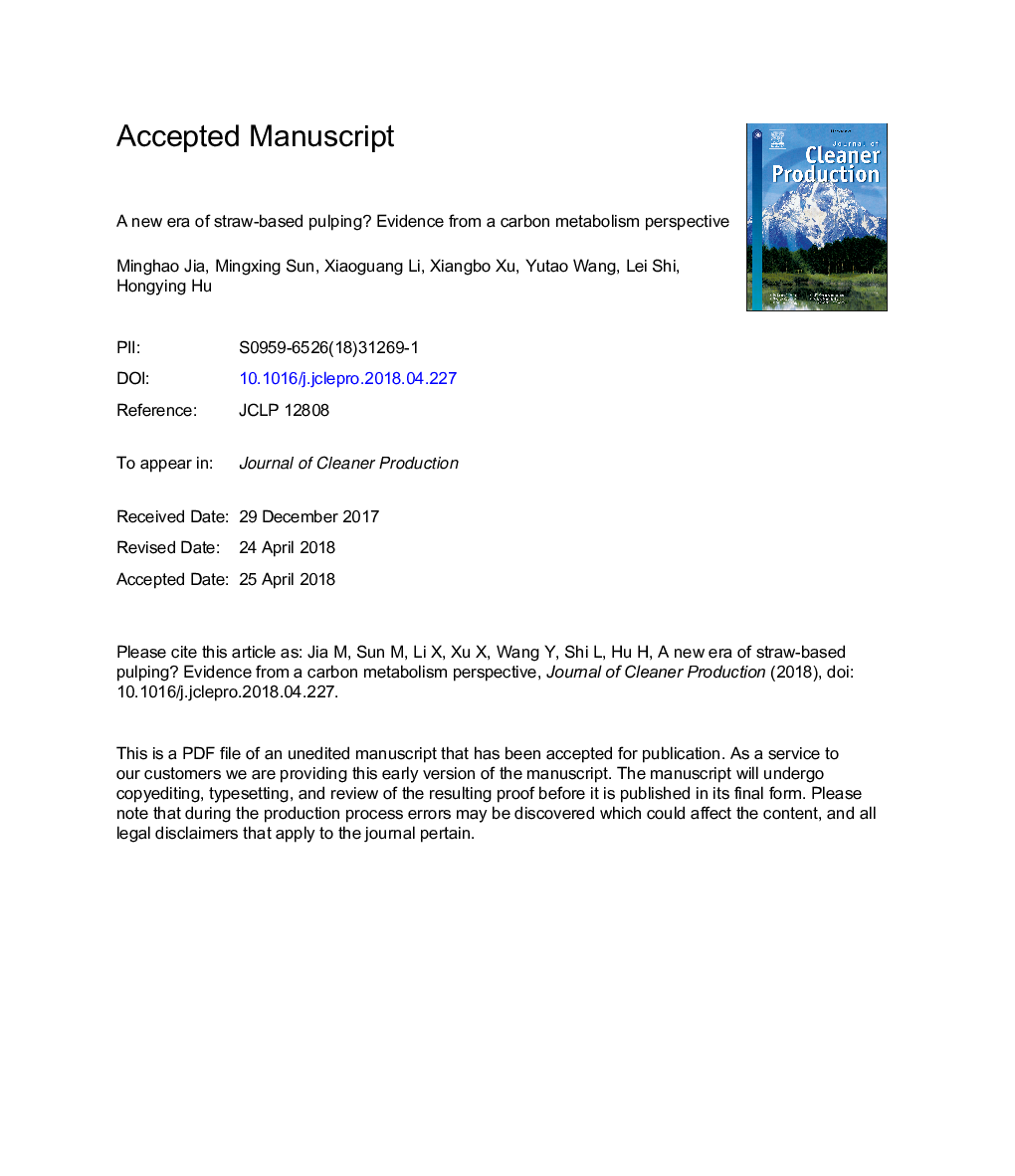| کد مقاله | کد نشریه | سال انتشار | مقاله انگلیسی | نسخه تمام متن |
|---|---|---|---|---|
| 8094451 | 1522060 | 2018 | 28 صفحه PDF | دانلود رایگان |
عنوان انگلیسی مقاله ISI
A new era of straw-based pulping? Evidence from a carbon metabolism perspective
ترجمه فارسی عنوان
عصر جدیدی از خمیر کاغذ بر پایه نی شواهد از منظر متابولیسم کربن
دانلود مقاله + سفارش ترجمه
دانلود مقاله ISI انگلیسی
رایگان برای ایرانیان
کلمات کلیدی
پودر کاه، متابولیسم کربن، تکنیک جدید، اقتصاد مدرن،
موضوعات مرتبط
مهندسی و علوم پایه
مهندسی انرژی
انرژی های تجدید پذیر، توسعه پایدار و محیط زیست
چکیده انگلیسی
Straw pulping plays a vital role in virgin pulp supply and regional agricultural residue utilization. However, a significant decrease in its production has been observed. From an environmental perspective, why has there been a sharp decrease in straw pulping? Are there any innovations in straw pulp production that alleviate the heavy environmental burdens of straw pulping? In this study, factors contributing to the decrease in straw pulp are examined. An innovative technique to produce straw pulp is introduced and its environmental performance is analyzed and compared with conventional pulping. The results show that the main reasons contributing to the environmental burdens of straw pulping lie in the difficulties in black liquor extraction and alkaline recovery for the black liquor. Technical processes are changed in the innovative technique of straw pulping through using a rapid displacement cooking process, converting black liquor into fertilizers, utilizing total chlorine-free bleaching, etc. The new technique (Case B) achieves superior environmental performance than that of the conventional technique (Case A) from a carbon metabolism perspective. Specifically, 1022.90â¯kg and 857.80â¯kg of biogenic-carbon (bio-carbon), and 594.32â¯kg and 628.13â¯kg of fossil-carbon are needed to make 1 ton of bleached straw pulp for Case A and Case B, respectively. The carbon efficiencies for Case A, Case B (when pulp is the only desired product) and Case B (when including other products) are 39.10%, 46.63% and 92.21%, respectively. The carbon factors for Case A, Case B (when pulp is the only desired product) and Case B (when including other products) are 3.66, 3.60 and 1.86â¯kg CO2-eq, respectively. In addition, the corresponding E factors, which reflect the waste generation level, are 3.20, 2.69, and 1.39â¯kg, respectively. The new technique for straw pulping, which follows the principle of a circular economy by fully utilizing resources and reducing the generation of waste, achieves both economic and environmental benefits. It is a promising technique for straw pulping.
ناشر
Database: Elsevier - ScienceDirect (ساینس دایرکت)
Journal: Journal of Cleaner Production - Volume 193, 20 August 2018, Pages 327-337
Journal: Journal of Cleaner Production - Volume 193, 20 August 2018, Pages 327-337
نویسندگان
Minghao Jia, Mingxing Sun, Xiaoguang Li, Xiangbo Xu, Yutao Wang, Lei Shi, Hongying Hu,
